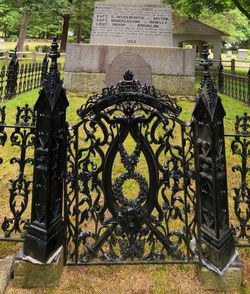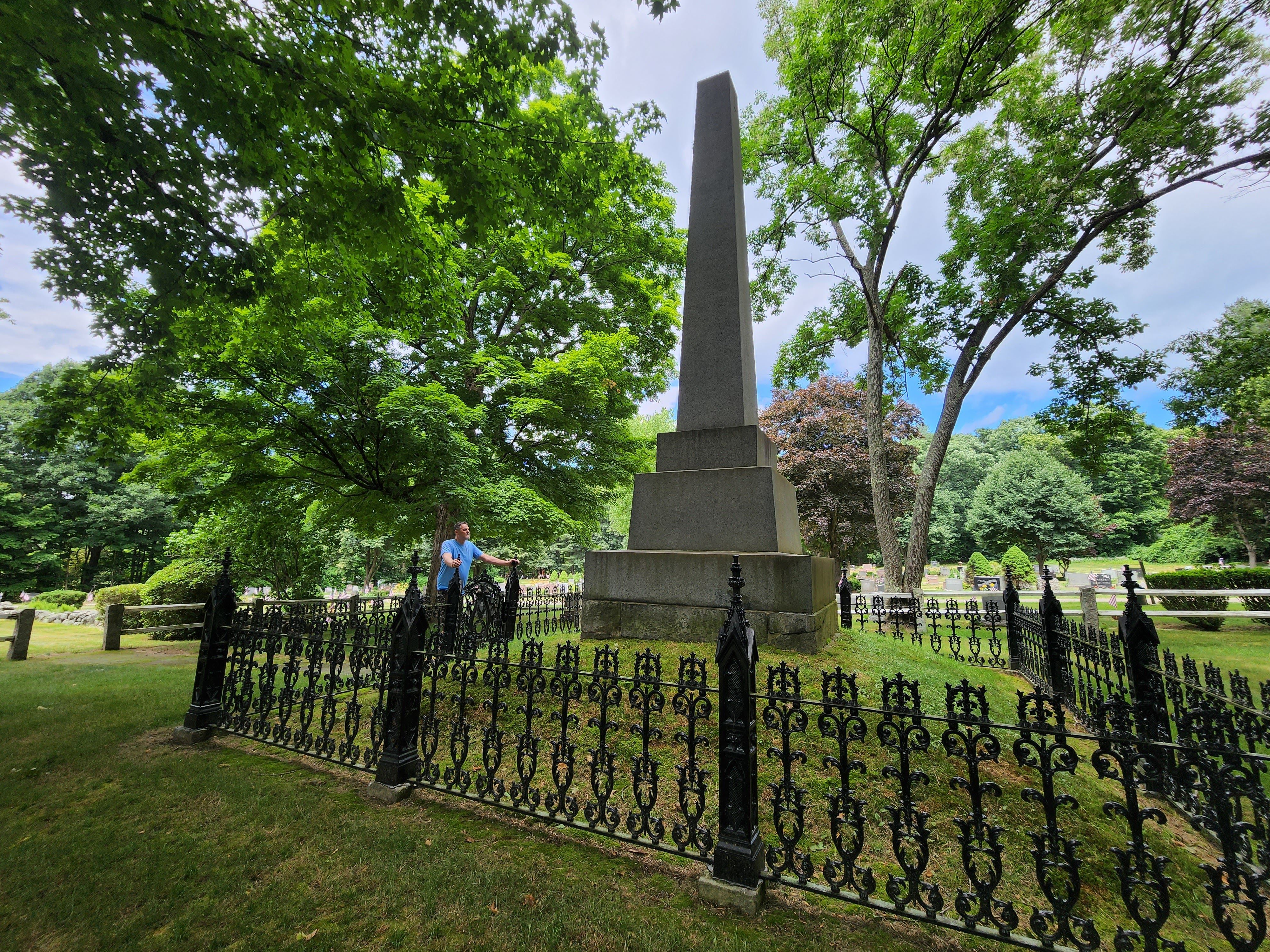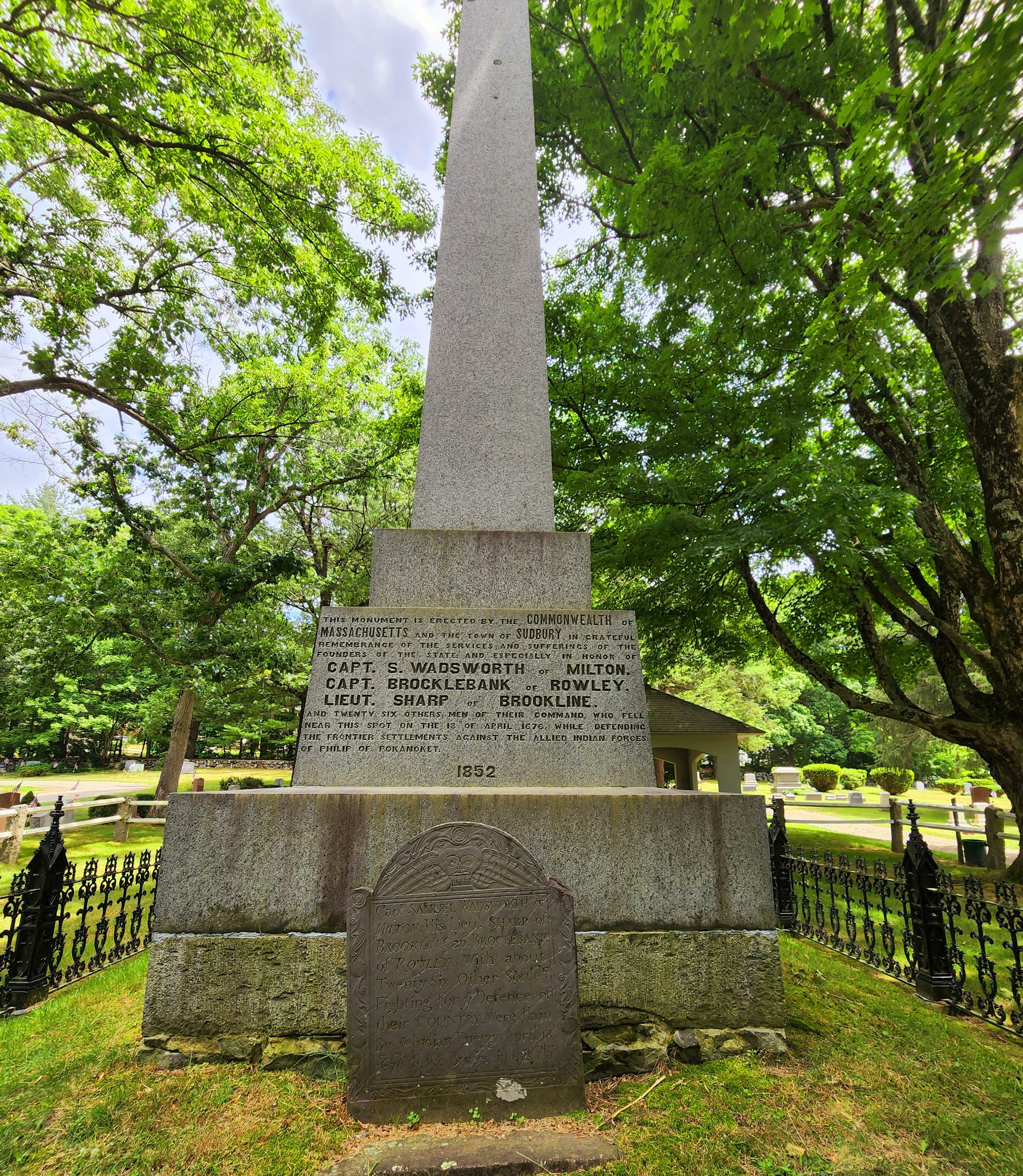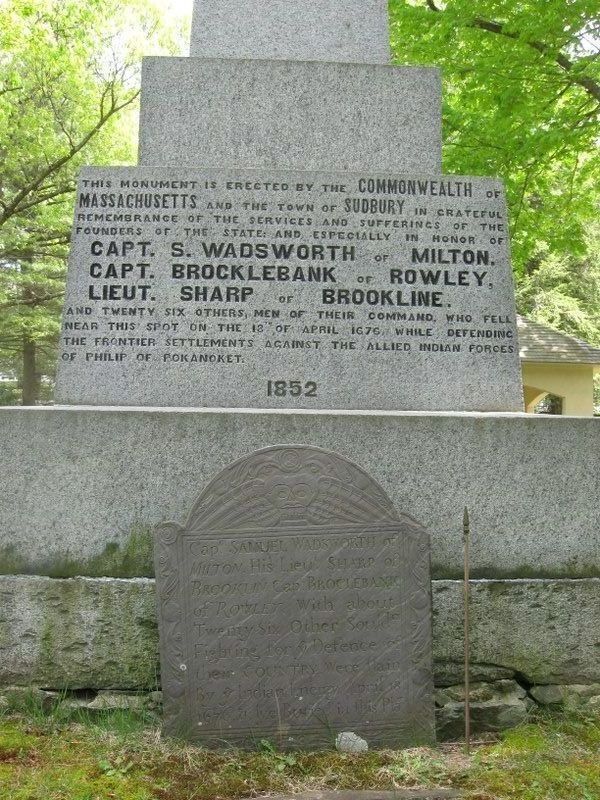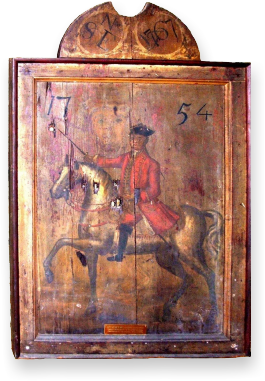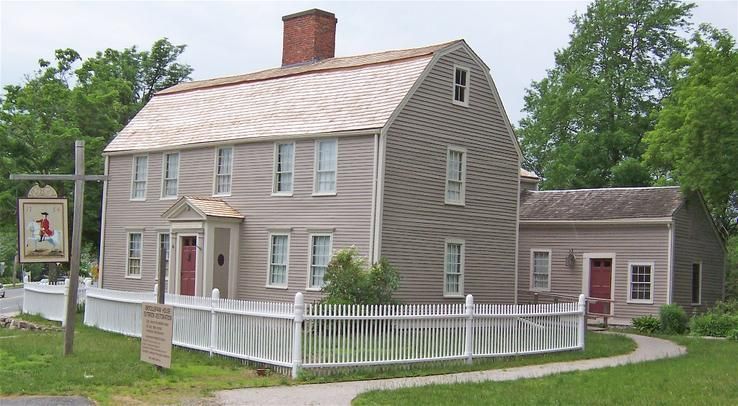Samuel married Hannah (maiden name unknown) on March 18, 1651-2 in Rowley, Essex County, Massachsetts. [The marriage is recorded as Samuel and Hannah Brocklebank - could she have been a Brocklebank cousin? Every other entry has a maiden name noted.] To this union, 10 children were born (all events in Rowley unless noted):
--Samuel born Sept 28, 1653 (28:9m) married Elizabeth Platts Nov 22, 1681
--Francis born July 26, 1655 (26:7m) bur July 22, 1660
--Hannah born Mar 28, 1659 married John Stickney on June 9, 1680
--John, no birth record, bur July 4, 1660
--Elizabeth born abt 1661 (birth not recorded in Rowley records) married John Tod on March 14, 1685 (per Essex Antiquarium Vol 12 p54)
--Mary (birth not in Rowley records) married William Dole Oct 15, 1684 in Newbury (marriage in Newbury records and per Essex Antiquarium Vol 12 p54 birth unknown)
--Sarah born Aug 29, 1666 (29 8m) died Jan 1, 1666-7
--Sarah born July 7, 1668 bp July 12, 1668 married Henry Dole in Newbury on Nov 3, 1686 and they had children Apphia and Sarah. He died Sept 13, 1690 and she remarried Hon Nathaniel Coffin on March 29, 1693. She is buried in Newbury.
--Jane (Jaine) born Jan 31, 1670 married Abiel Somerby in Newbury on Jan 26, 1692-3
--Joseph born Nov 28, 1674 married Elizabeth Barker Feb 18, 1701-2
Brother John was born around 1630 (per Essex Antiquarian) and married Sarah Woodman on Sept 26, 1657 and had children:
John born Jan 21, 1658 bur Aug 7, 1660
Elizabeth* born Nov 20, 1660 [living in 1685 (per Essex Antiquarium Vol 12 p54)
Sarah born Sept 11, 1664 married James Putnam of Salem about 1685 (per Essex Antiquarium Vol 12 p54)
Ens John was buried Apr 5, 1666 so none of the Brocklebank descendants are from Samuel's brother John.
Samuel was killed with his entire company in Sudbury in 1676 in a skirmish with Indians during King Philip's War.
Samuel's wife Hannah married Richard Dole after Samuel's death. Richard Dole is buried at the Burying Ground of the First Settlers Cemetery in Newbury, Essex County, Massachusetts with his first wife Hannah Rolfe Dole. It is unclear whether Hannah Brocklebank Dole is there also.... we are looking for her!
==============
AN EXCERPT FROM Soldiers in King Philip's War: Being a Critical Account of that War by George Madison Bodge. Page 210 (Though Capt Brocklebank is mentioned on several other pages throughout the book, this section mentions his family and origins).
CAPT. SAMUEL BROCKLEBANK'S COMPANY AND MARLBOROUGH GARRISON
Samuel of Rowley, is said to have been born in England about 1630, and to have come to this country with his mother Jane, a widow, and his brother John. Samuel Brocklebank and his wife Hannah had children -- Samuel, born 1653; Francis, born 1655; Hannah, Mary, Elizabeth, Sarah, and Joseph who was born in 1674. He was appointed deacon of the first church in Rowley in 1665. Elected captain of the Foot Company of Rowley in 1673. Was active in recruiting for the Narraganset campaign, and after the fort fight, on the second call for recruits, went out with a company about January 1st, as I judge from his credits, and those corresponding credits of his men, which according to my best estimates were for five weeks, up to February 5th, when they returned to Boston, and reckoned from the time they left Rowley.
After the return to Boston, Capt. Brocklebank, with his company, within one week was called to Marlborough, where he was placed in command of the garrisons and military operations, and remained until April 21st, when he marched to Sudbury, with Capt. Wadsworth and his company, where they were ambushed by the Indians, and both captains, with most of their men, were slain. The account of this battle is in the Capt. Wadsworth chapter, as he was in command.
After the death of Capt. Brocklebank, his widow married Richard Dole, of Newbury. His descendants of the name are quite numerous by his son Samuel and Elizabeth Platts his wife; by his daughters Mary and Sarah, who married William and Henry, sons of Richard Dole; and by his daughter Hannah, who married John Stickney.
==============
The following information was taken from a second memorial that was created for Capt Brocklebank by contributor rev1914 and provides more information on the battle and the memorial to the soldiers lost in Sudbury that day.
The following excerpts are from the family genealogy book, "Moses Wadsworth and Hannah Stevens; Their Ancestral Lines and Their Descendants," 1941:
King Philip's War began in 1675; at that time Samuel Wadsworth was captain of the militia of Milton. In April 1676, he was ordered to repair to Marlboro with fifty soldiers to strengthen the garrison at that place. The homes there were already in ruins, and the place was almost abandoned, but a small guard was maintained to protect the road to Connecticut; Captain Brocklebank was the garrison commander. At this time, Sudbury was left the most westerly settlement, with nothing beyond except the garrison. King Philip had determined upon an attack at this place, and in person stealthily led a band of a thousand Indians to this vicinity. Captain Wadsworth and his men passed through Sudbury on their way to Marlboro, and all appeared quiet there, but when he reached the garrison, he heard that Sudbury was being attacked. Although he and his company had marched all day and all night, he hastened to the defense of the settlers, taking with him such soldiers as were able to travel, and exchanging others for men at the garrison--about fifty men in all; Captain Brocklebank accompanied the party. While reconnoitering on Green Hill, they were attacked from ambush, and Captain Wadsworth and Captain Brocklebank, with about 28 men were slain, twenty of the party escaping with their lives. This encounter was attended by dire atrocities.
A number of men of that time wrote accounts of the Battle of Green Hill, or made notes regarding it. One of these was General Daniel Gookin, the son of the Daniel Gookin who was the companion of William Wadsworth in Virginia in 1621, both men having returned to England before settling in Massachusetts. General Gookin was at this time the commanding officer of the Middlesex forces and the Superintendant of the "Praying (Christian) Indians," in the Colony. The date of the battle was estimated as taking place on one of the days between the 18th and the 21st, and eventually the 18th was decided upon. Years later, the finding of The Old Petition fixed the date as April 21, 1676.
Captain Wadsworth, with Captain Brocklebank and their men were laid to rest in a common grave on the westerly side of Green Hill, where they met their death. The place was marked by a pile of loose field stones, about 12 feet wide at their base and 3 or 4 feet high. In 1730, a slab of plain slate was erected by Captain Wadsworth's son, Dr. Benjamin Wadsworth, then president of Harvard College. In 1852, the state of Massachusetts and the town of Sudbury moved the remains to a higher portion of the cemetery and erected an obelisk, incorporating the original slab. This monument stands at the entrance of Mt. Wadsworth Cemetery, sudbury.
=============
Brocklebank Museum
Museum is Located at 108 East Main Street
Georgetown, Massachusetts
(On Rte 133, across from the Elm St and East Main St intersection)
The Brocklebank-Nelson-Beecher house is a First Period structure believed to have been built in the late 1600s. The land on which the house stands was granted in 1661 to Samuel Brocklebank a surveyor who had come from England to Rowley as a child in 1638. It is thought that Captain Brocklebank built the house shortly after his marriage to a woman named Hannah in 1668. The site was chosen near a brook where Samuel had kept cattle penned previously. The area is known to this day as "Penn Brook." Brocklebank, a captain in the militia, was killed with his entire company in Sudbury in 1676 in a skirmish with Indians during King Philip's War. The house remained in the Brocklebank family until 1754, when it was acquired by Dudley Tyler for use as a tavern. Solomon Nelson who purchased the property in 1767 also kept a tavern here for many years. In 1858 the house was bought by Rev Charles Beecher, brother of Harriet Beecher Stow and a controversial figure in his own right. He was the pastor of The Second Parish Church which once stood opposite of the house. In 1880, the house was acquired by M.G. Spofford and subsequently passed to furniture manufacturer Everett Spaulding, a tenth generation Brocklebank descendant, in 1931. He sold the property to the Society in 1975. The original house was added to several times in the early years and it is described in the 1990 Georgetown Historic Resource Survey as a gambrel roofed, 5-bay, center chimney dwelling of early eighteenth century appearance. Several artifacts help to make the Brocklebank Museum unique. Upon entering the old Tavern Room, one encounters a restored "walk-in" fireplace which is said to be one of the largest in New England. The "Haunted Meal Chest" sits against one wall of the same room. Local legend holds that a young servant girl found that the large meal chest moved mysteriously whenever her skirt brushed up against it. The phenomenon lasted only a few weeks but made a lasting impression on all who witnessed it. The chest, which had passed hands to the House Of Seven Gables in Salem was returned to its original hometown in the 1970s. Next to a stairway hangs the original tavern sign which features a red-coated soldier on horseback. Looking closely, the visitor notices several musket ball holes reportedly put there by Minutemen returning from the Battle of Lexington. In another room, visitors can look down through a viewing panel to the cellar where a secret "slave hole" was built during the days of the Underground Railroad. This room is believed to have been constructed by the Reverend Beecher who was a fervent abolitionist . Also on display is an original slave collar similar to those worn by captured run-away slaves. In addition, there are hundreds of mementos of Georgetown's past in the museum from the original railroad depot sign to china used in the famous old Baldpate Inn. The memory of the shoe industry is kept alive through numerous displays including a small back yard shoe shop which was a part of a cottage industry in Georgetown for generations.
Source: Georg Town Historical Society
==========
Ancestry.com has this arrival information that seems to contradict the above excerpt (if accurate and is the same Samuel Brocklebank):
U.S. and Canada, Passenger and Immigration Lists Index, 1500s-1900s about Samuel Brockelbank
Name: Samuel Brockelbank
Arrival Year: 1628
Arrival Place: Boston, Massachusetts
Family Members: Mother
Source Publication Code: 1262
Primary Immigrant: Brockelbank, Samuel
Annotation: Date and place of settlement or date and place of arrival. Names not restricted to the Order of Founders and Patriots of America.
Source Bibliography: COLKET, MEREDITH B., JR. Founders of Early American Families: Emigrants from Europe, 1607-1657. Cleveland: General Court of the Order of Founders and Patriots of America, 1975. 366p.
Page: 46
Source Information:
Ancestry.com. U.S. and Canada, Passenger and Immigration Lists Index, 1500s-1900s [database on-line]. Provo, UT, USA: Ancestry.com Operations, Inc, 2010.
Original data: Filby, P. William, ed. Passenger and Immigration Lists Index, 1500s-1900s. Farmington Hills, MI, USA: Gale Research, 2012.
Samuel married Hannah (maiden name unknown) on March 18, 1651-2 in Rowley, Essex County, Massachsetts. [The marriage is recorded as Samuel and Hannah Brocklebank - could she have been a Brocklebank cousin? Every other entry has a maiden name noted.] To this union, 10 children were born (all events in Rowley unless noted):
--Samuel born Sept 28, 1653 (28:9m) married Elizabeth Platts Nov 22, 1681
--Francis born July 26, 1655 (26:7m) bur July 22, 1660
--Hannah born Mar 28, 1659 married John Stickney on June 9, 1680
--John, no birth record, bur July 4, 1660
--Elizabeth born abt 1661 (birth not recorded in Rowley records) married John Tod on March 14, 1685 (per Essex Antiquarium Vol 12 p54)
--Mary (birth not in Rowley records) married William Dole Oct 15, 1684 in Newbury (marriage in Newbury records and per Essex Antiquarium Vol 12 p54 birth unknown)
--Sarah born Aug 29, 1666 (29 8m) died Jan 1, 1666-7
--Sarah born July 7, 1668 bp July 12, 1668 married Henry Dole in Newbury on Nov 3, 1686 and they had children Apphia and Sarah. He died Sept 13, 1690 and she remarried Hon Nathaniel Coffin on March 29, 1693. She is buried in Newbury.
--Jane (Jaine) born Jan 31, 1670 married Abiel Somerby in Newbury on Jan 26, 1692-3
--Joseph born Nov 28, 1674 married Elizabeth Barker Feb 18, 1701-2
Brother John was born around 1630 (per Essex Antiquarian) and married Sarah Woodman on Sept 26, 1657 and had children:
John born Jan 21, 1658 bur Aug 7, 1660
Elizabeth* born Nov 20, 1660 [living in 1685 (per Essex Antiquarium Vol 12 p54)
Sarah born Sept 11, 1664 married James Putnam of Salem about 1685 (per Essex Antiquarium Vol 12 p54)
Ens John was buried Apr 5, 1666 so none of the Brocklebank descendants are from Samuel's brother John.
Samuel was killed with his entire company in Sudbury in 1676 in a skirmish with Indians during King Philip's War.
Samuel's wife Hannah married Richard Dole after Samuel's death. Richard Dole is buried at the Burying Ground of the First Settlers Cemetery in Newbury, Essex County, Massachusetts with his first wife Hannah Rolfe Dole. It is unclear whether Hannah Brocklebank Dole is there also.... we are looking for her!
==============
AN EXCERPT FROM Soldiers in King Philip's War: Being a Critical Account of that War by George Madison Bodge. Page 210 (Though Capt Brocklebank is mentioned on several other pages throughout the book, this section mentions his family and origins).
CAPT. SAMUEL BROCKLEBANK'S COMPANY AND MARLBOROUGH GARRISON
Samuel of Rowley, is said to have been born in England about 1630, and to have come to this country with his mother Jane, a widow, and his brother John. Samuel Brocklebank and his wife Hannah had children -- Samuel, born 1653; Francis, born 1655; Hannah, Mary, Elizabeth, Sarah, and Joseph who was born in 1674. He was appointed deacon of the first church in Rowley in 1665. Elected captain of the Foot Company of Rowley in 1673. Was active in recruiting for the Narraganset campaign, and after the fort fight, on the second call for recruits, went out with a company about January 1st, as I judge from his credits, and those corresponding credits of his men, which according to my best estimates were for five weeks, up to February 5th, when they returned to Boston, and reckoned from the time they left Rowley.
After the return to Boston, Capt. Brocklebank, with his company, within one week was called to Marlborough, where he was placed in command of the garrisons and military operations, and remained until April 21st, when he marched to Sudbury, with Capt. Wadsworth and his company, where they were ambushed by the Indians, and both captains, with most of their men, were slain. The account of this battle is in the Capt. Wadsworth chapter, as he was in command.
After the death of Capt. Brocklebank, his widow married Richard Dole, of Newbury. His descendants of the name are quite numerous by his son Samuel and Elizabeth Platts his wife; by his daughters Mary and Sarah, who married William and Henry, sons of Richard Dole; and by his daughter Hannah, who married John Stickney.
==============
The following information was taken from a second memorial that was created for Capt Brocklebank by contributor rev1914 and provides more information on the battle and the memorial to the soldiers lost in Sudbury that day.
The following excerpts are from the family genealogy book, "Moses Wadsworth and Hannah Stevens; Their Ancestral Lines and Their Descendants," 1941:
King Philip's War began in 1675; at that time Samuel Wadsworth was captain of the militia of Milton. In April 1676, he was ordered to repair to Marlboro with fifty soldiers to strengthen the garrison at that place. The homes there were already in ruins, and the place was almost abandoned, but a small guard was maintained to protect the road to Connecticut; Captain Brocklebank was the garrison commander. At this time, Sudbury was left the most westerly settlement, with nothing beyond except the garrison. King Philip had determined upon an attack at this place, and in person stealthily led a band of a thousand Indians to this vicinity. Captain Wadsworth and his men passed through Sudbury on their way to Marlboro, and all appeared quiet there, but when he reached the garrison, he heard that Sudbury was being attacked. Although he and his company had marched all day and all night, he hastened to the defense of the settlers, taking with him such soldiers as were able to travel, and exchanging others for men at the garrison--about fifty men in all; Captain Brocklebank accompanied the party. While reconnoitering on Green Hill, they were attacked from ambush, and Captain Wadsworth and Captain Brocklebank, with about 28 men were slain, twenty of the party escaping with their lives. This encounter was attended by dire atrocities.
A number of men of that time wrote accounts of the Battle of Green Hill, or made notes regarding it. One of these was General Daniel Gookin, the son of the Daniel Gookin who was the companion of William Wadsworth in Virginia in 1621, both men having returned to England before settling in Massachusetts. General Gookin was at this time the commanding officer of the Middlesex forces and the Superintendant of the "Praying (Christian) Indians," in the Colony. The date of the battle was estimated as taking place on one of the days between the 18th and the 21st, and eventually the 18th was decided upon. Years later, the finding of The Old Petition fixed the date as April 21, 1676.
Captain Wadsworth, with Captain Brocklebank and their men were laid to rest in a common grave on the westerly side of Green Hill, where they met their death. The place was marked by a pile of loose field stones, about 12 feet wide at their base and 3 or 4 feet high. In 1730, a slab of plain slate was erected by Captain Wadsworth's son, Dr. Benjamin Wadsworth, then president of Harvard College. In 1852, the state of Massachusetts and the town of Sudbury moved the remains to a higher portion of the cemetery and erected an obelisk, incorporating the original slab. This monument stands at the entrance of Mt. Wadsworth Cemetery, sudbury.
=============
Brocklebank Museum
Museum is Located at 108 East Main Street
Georgetown, Massachusetts
(On Rte 133, across from the Elm St and East Main St intersection)
The Brocklebank-Nelson-Beecher house is a First Period structure believed to have been built in the late 1600s. The land on which the house stands was granted in 1661 to Samuel Brocklebank a surveyor who had come from England to Rowley as a child in 1638. It is thought that Captain Brocklebank built the house shortly after his marriage to a woman named Hannah in 1668. The site was chosen near a brook where Samuel had kept cattle penned previously. The area is known to this day as "Penn Brook." Brocklebank, a captain in the militia, was killed with his entire company in Sudbury in 1676 in a skirmish with Indians during King Philip's War. The house remained in the Brocklebank family until 1754, when it was acquired by Dudley Tyler for use as a tavern. Solomon Nelson who purchased the property in 1767 also kept a tavern here for many years. In 1858 the house was bought by Rev Charles Beecher, brother of Harriet Beecher Stow and a controversial figure in his own right. He was the pastor of The Second Parish Church which once stood opposite of the house. In 1880, the house was acquired by M.G. Spofford and subsequently passed to furniture manufacturer Everett Spaulding, a tenth generation Brocklebank descendant, in 1931. He sold the property to the Society in 1975. The original house was added to several times in the early years and it is described in the 1990 Georgetown Historic Resource Survey as a gambrel roofed, 5-bay, center chimney dwelling of early eighteenth century appearance. Several artifacts help to make the Brocklebank Museum unique. Upon entering the old Tavern Room, one encounters a restored "walk-in" fireplace which is said to be one of the largest in New England. The "Haunted Meal Chest" sits against one wall of the same room. Local legend holds that a young servant girl found that the large meal chest moved mysteriously whenever her skirt brushed up against it. The phenomenon lasted only a few weeks but made a lasting impression on all who witnessed it. The chest, which had passed hands to the House Of Seven Gables in Salem was returned to its original hometown in the 1970s. Next to a stairway hangs the original tavern sign which features a red-coated soldier on horseback. Looking closely, the visitor notices several musket ball holes reportedly put there by Minutemen returning from the Battle of Lexington. In another room, visitors can look down through a viewing panel to the cellar where a secret "slave hole" was built during the days of the Underground Railroad. This room is believed to have been constructed by the Reverend Beecher who was a fervent abolitionist . Also on display is an original slave collar similar to those worn by captured run-away slaves. In addition, there are hundreds of mementos of Georgetown's past in the museum from the original railroad depot sign to china used in the famous old Baldpate Inn. The memory of the shoe industry is kept alive through numerous displays including a small back yard shoe shop which was a part of a cottage industry in Georgetown for generations.
Source: Georg Town Historical Society
==========
Ancestry.com has this arrival information that seems to contradict the above excerpt (if accurate and is the same Samuel Brocklebank):
U.S. and Canada, Passenger and Immigration Lists Index, 1500s-1900s about Samuel Brockelbank
Name: Samuel Brockelbank
Arrival Year: 1628
Arrival Place: Boston, Massachusetts
Family Members: Mother
Source Publication Code: 1262
Primary Immigrant: Brockelbank, Samuel
Annotation: Date and place of settlement or date and place of arrival. Names not restricted to the Order of Founders and Patriots of America.
Source Bibliography: COLKET, MEREDITH B., JR. Founders of Early American Families: Emigrants from Europe, 1607-1657. Cleveland: General Court of the Order of Founders and Patriots of America, 1975. 366p.
Page: 46
Source Information:
Ancestry.com. U.S. and Canada, Passenger and Immigration Lists Index, 1500s-1900s [database on-line]. Provo, UT, USA: Ancestry.com Operations, Inc, 2010.
Original data: Filby, P. William, ed. Passenger and Immigration Lists Index, 1500s-1900s. Farmington Hills, MI, USA: Gale Research, 2012.
